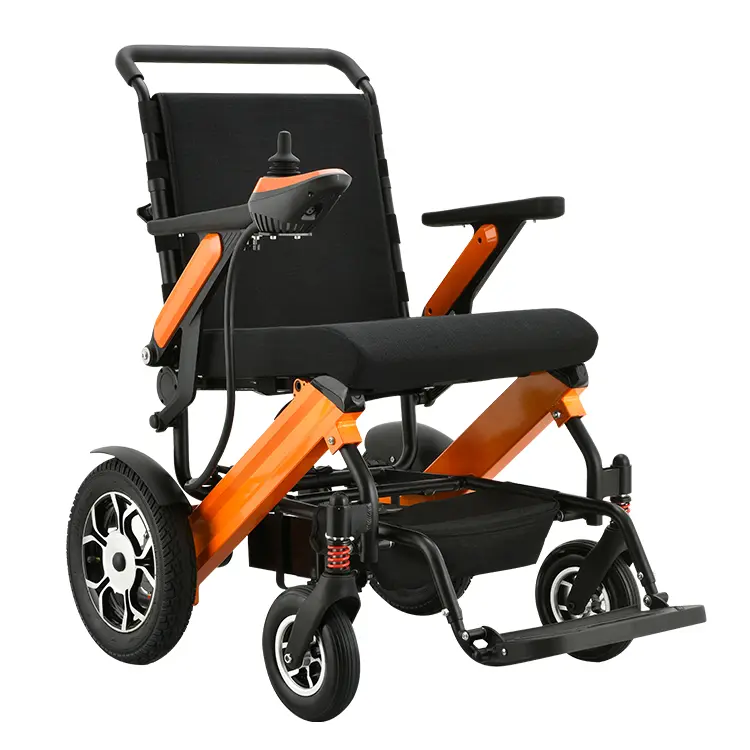Electric wheelchair EU CE certification requirements and certification standards
I. CE certification overview
CE certification is a mandatory certification for electric wheelchairs to enter the EU market, which aims to ensure the safety and reliability of the product. According to the EU Medical Device Regulation (MDR) (EU) 2017/745, electric wheelchairs are classified as Class I or Class IIa medical devices. The following are the core requirements and standards for electric wheelchair CE certification.
2. Applicable regulations
(I) Main regulations
EU Medical Device Regulation (MDR) (EU) 2017/745: This is the core regulation for electric wheelchair CE certification, which stipulates the basic requirements for products.
Electromagnetic Compatibility Directive (EMC) 2014/30/EU: Ensures the electromagnetic compatibility of electric wheelchairs.
Low Voltage Directive (LVD) 2014/35/EU: Applicable to the electrical safety of electric wheelchairs.
Battery and accumulator regulations: If the electric wheelchair uses lithium batteries, it must also comply with relevant battery regulations.

3. Key certification standards
(I) EN 12184:2014
This standard applies to electric wheelchairs and their chargers with a maximum speed of no more than 15 km/h and a load of no more than 300 kg. It covers the following key test items:
Braking system: ensure that it can still be operated when the battery is exhausted or in flywheel mode.
Dynamic stability: test the stability of the wheelchair at different slopes.
Static stability: evaluate the stability of the wheelchair when it is stationary.
Parking brake effect: test the reliability of the parking brake.
Obstacle climbing and descending ability: evaluate the ability of the wheelchair to cross obstacles.
Power system test: including battery overcharge/over-discharge protection, circuit protection, etc.
Environmental adaptability test: such as temperature and humidity test, waterproof performance test.
(II) EN 60601-1:2006/A1:2013
This standard specifies the basic safety and important performance requirements of medical electrical equipment. Electric wheelchairs must meet the following requirements:
Electrical safety: ensure the safety of batteries, circuits and chargers.
Overload protection: prevent circuit overload and short circuit.
Insulation performance: ensure the insulation performance of electrical components.
(III) EN 60601-1-2:2015
This standard specifies the electromagnetic compatibility requirements for medical electrical equipment. Electric wheelchairs must pass the following tests:
Electromagnetic interference (EMI) test: ensure that the equipment does not interfere with other equipment.
Electromagnetic immunity (EMS) test: ensure that the equipment works normally in an electromagnetic environment.
(IV) EN ISO 13485
This standard specifies the requirements for the quality management system of medical devices. Enterprises need to establish and maintain a quality management system to ensure the consistency of the production process and product quality.
(V) EN ISO 14971
This standard requires a risk assessment of the entire life cycle of medical devices. Manufacturers need to identify potential risks and take measures to reduce risks.
(VI) EN ISO 10993 series
This series of standards involves biocompatibility testing of medical devices. If the parts of the electric wheelchair come into contact with the human body, a biocompatibility assessment is required.
4. Technical Document Requirements
The following technical documents are required for CE certification:
Risk assessment report: prepared in accordance with EN ISO 14971.
Design drawings and functional description: detailed description of the product design and function.
Test report: including test results of EN 12184 and EN 60601 series standards.
EMC test report: prepared in accordance with EN 60601-1-2.
Battery safety report: if lithium batteries are used, IEC 62133 or UN38.3 test reports are required.
Biocompatibility test report: if the product is in contact with the human body, relevant test reports are required.
Clinical evaluation report: evaluates the clinical performance and safety of the product.
Declaration of Conformity (DoC): declares that the product complies with all applicable regulations and standards.
Instructions for use: contains product usage, safety warnings and maintenance guidelines.
5. Certification process
(I) Product classification and compliance path determination
Determine the classification of the electric wheelchair (Class I or Class IIa) based on the product characteristics.
(II) Prepare technical documents
Compile complete technical documents in accordance with the above requirements.
(III) Select a certification body
Choose a qualified certification body for cooperation.
(IV) Testing and evaluation
Send samples to the laboratory for various tests, including mechanical performance tests, electrical safety tests, EMC tests, etc.
(V) Audit and certification
The certification body reviews the technical documents and test reports to ensure that the product meets the requirements. After the audit is passed, the CE certificate is issued.
(VI) Issue a declaration of conformity
The manufacturer needs to issue a declaration of conformity (DoC) stating that the product complies with all applicable regulations and standards.
(VII) Product identification and registration
Affix the CE mark to the product and complete the product registration in the Eudamed system.
6. Notes
(I) Select a compliance service agency
Ensure that the certification body and the EU authorized representative (EU representative) have relevant qualifications.
(II) Long-term maintenance of documents
Technical documents must be kept for at least 10 years for random inspection by regulatory authorities.
(III) Market differences
Some countries (such as Switzerland and the United Kingdom) require additional registration (such as UKCA and Swiss registration) on the basis of CE certification.
(IV) Language requirements
The instruction manual must provide the official language version of the target market.
VII. Summary
The CE certification of electric wheelchairs is a necessary condition for entering the EU market, involving multiple regulations and standards. Manufacturers need to ensure that their products comply with standards such as EN 12184 and EN 60601, establish a quality management system, complete risk assessment, and pass various tests. Passing the CE certification can not only ensure the safety and reliability of the product, but also enhance the competitiveness of the product in the international market.
Post time: Jul-21-2025

